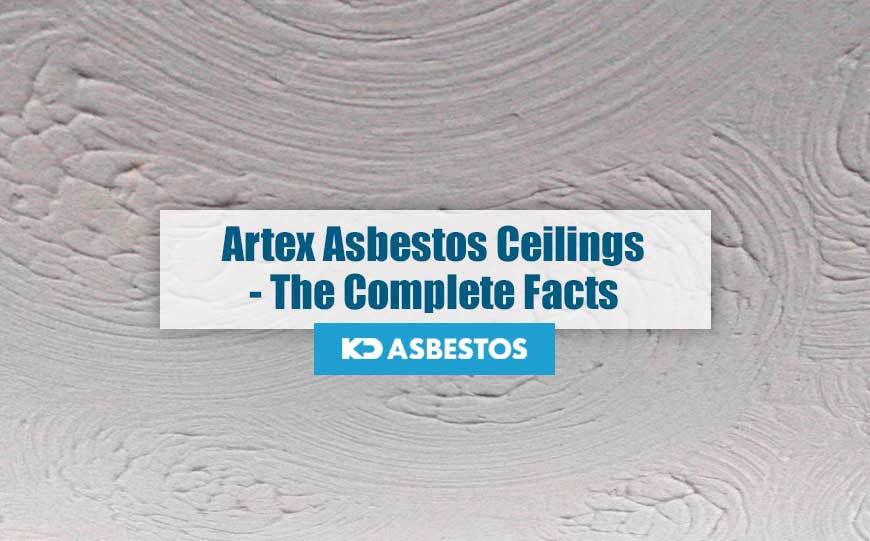
Textured decorative coatings such as for an Artex asbestos ceiling used to be very popular a few decades ago.
They were used on walls and ceilings to make them look more aesthetically pleasing.
But did you know, Artex used to contain asbestos?
Until the year 1984, asbestos used to be present in these textured decorative coatings.
So if you have any ceilings which date back then, you should be careful.
Table of Contents
Which Types of Ceilings Contain Asbestos?
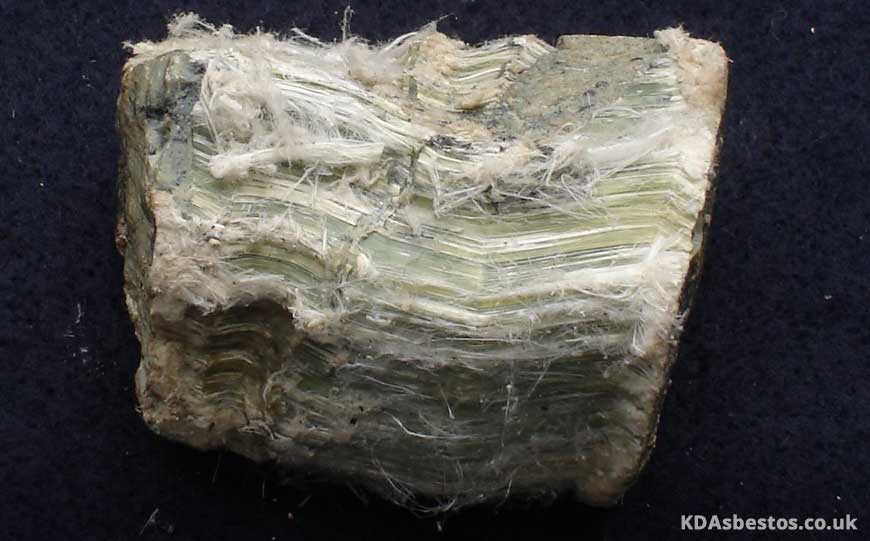
Artex containing asbestos was considered to be a very versatile product, as it could easily be applied to ceilings and walls.
The asbestos was added to make the material stronger, as it was good as a binder.
The asbestos content in such coatings varies, but it could amount to up to 3%.
If the property had the walls or ceilings finished in this way before 1984, then chances are that it could contain types of asbestos.
Artex was particularly popular during the 1960’s, 70’s and early 80’s.
The name Artex was synonymous with textured coatings, but similar products with other names were also popular, including Suretex, Wondertex, Marblecoat and Pebblecoat.
All of these contained chrysotile asbestos, also known as white asbestos.
Asbestos containing Artex continued to be produced until 1984 in the UK.
So there’s a strong possibility that it could still have been installed several years later, even if it was no longer legal to produce.
What Do They Look Like?
You cannot really be completely sure whether Artex decorative coating contains asbestos or not by simply looking at it.
The main reason is that asbestos was mixed with various other materials to produce the compound.
The fibres are microscopic, and even if they were to be released in the air they would neither be seen nor smelt.
Hence, to be completely certain, one would need to carry out asbestos testing in a professional lab.
However here are some pointers which you may wish to consider:
- The colour is white, although it may have been painted over.
- If the ceiling is textured, and if it was done prior to 1984, then it may contain asbestos.
- It is also referred to as popcorn ceiling due to the texture.
What is Artex?
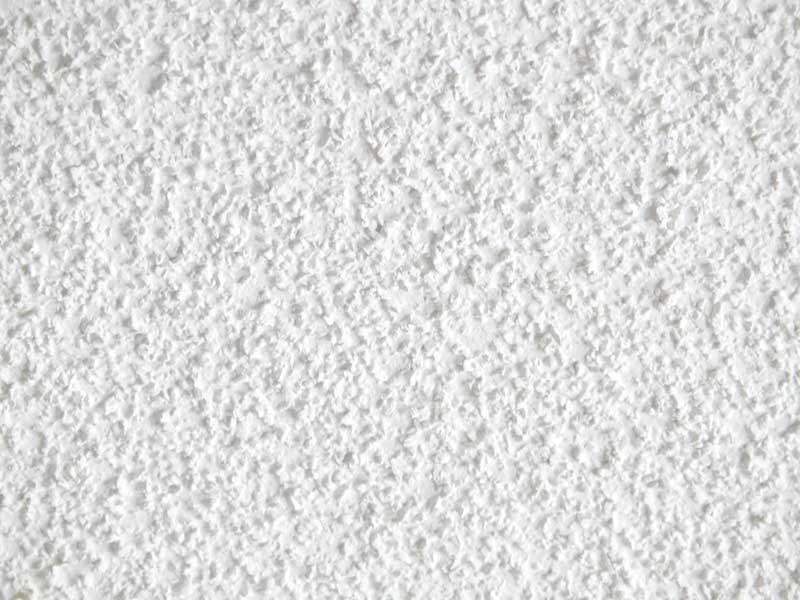
This interior decorating product originated from the name of the company that used to produce it.
But there are also several other brand names as mentioned above.
This coating was applied in a decorative pattern, and it used to be very popular both in residential as well as commercial properties.
Is Asbestos in Ceilings Dangerous to Health?
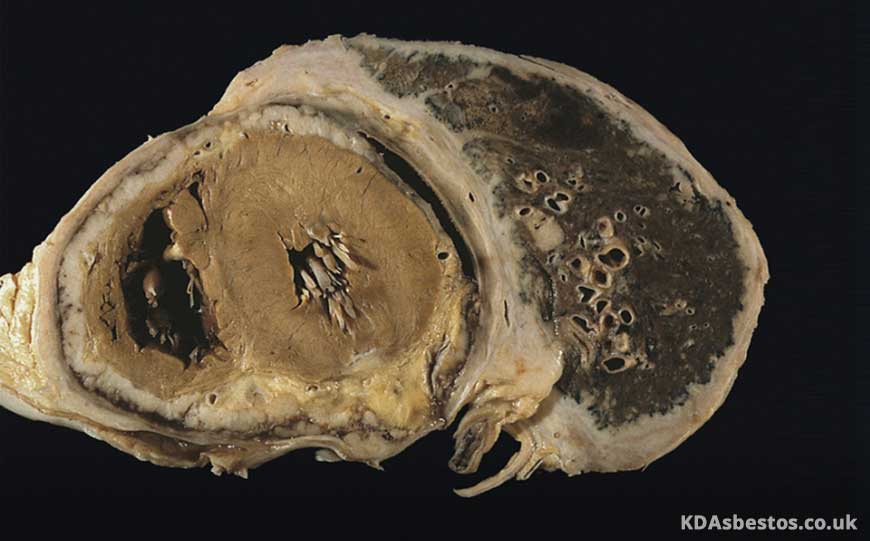
Work carried out on any type of asbestos containing materials can be dangerous.
However when it comes to Artex coatings, it is not too dangerous as the asbestos content is not that high.
It is important to consider the level of deterioration that will occur if works were carried out though.
If the work is expected to cause significant break up or deterioration, and if the removal is large scale, it is best to have a professional take care of the job.
In such cases, certain specialised methods would be required, such as steaming or gelling.
Hence it is not something that one can handle without the necessary expertise and equipment.
As long as the ceiling is in good condition and not deteriorating in some way or another, you do not really need to worry about the dangers associated with asbestos too much.
Hence, even if it’s been confirmed from tests that your property has textured decorative coatings which contain asbestos, it’s perfectly fine to leave them in place, just as long as they remain undamaged and in good condition.
This is because the fibres within will be well bonded, and only disturbance would possibly lead to the asbestos fibres getting released in the air.
Asbestos related illnesses can take several years to become evident, as symptoms of asbestos exposure take a long time to develop.
When asbestos fibres are inhaled, they are trapped in the respiratory system such as the lungs.
They remain there without causing complications, until after several years one may start to feel shortness of breath, and various other problems.
Serious and life threatening diseases like asbestosis and mesothelioma can emerge.
While chances of developing such health problems and illnesses as a result of being exposed to Artex containing asbestos is not that high, it’s still very important to be careful should one have such a ceiling or wall at home.
When Was Asbestos Used in Artex?
Asbestos was used to manufacture Artex coatings several decades ago.
The material was popular in construction and interior decorating from the 1930s right up until the 1980s.
It was sometimes referred to as popcorn ceiling.
It was a great way to add a decorative finish to ceilings and walls, and it was affordable too.
It was also ideal to hide away any imperfections.
Asbestos was added as it helped to make the Artex much stronger.
Due to the asbestos properties, it was also great as a fire retardant and as an insulating material.
Does My Artex Contain Asbestos?
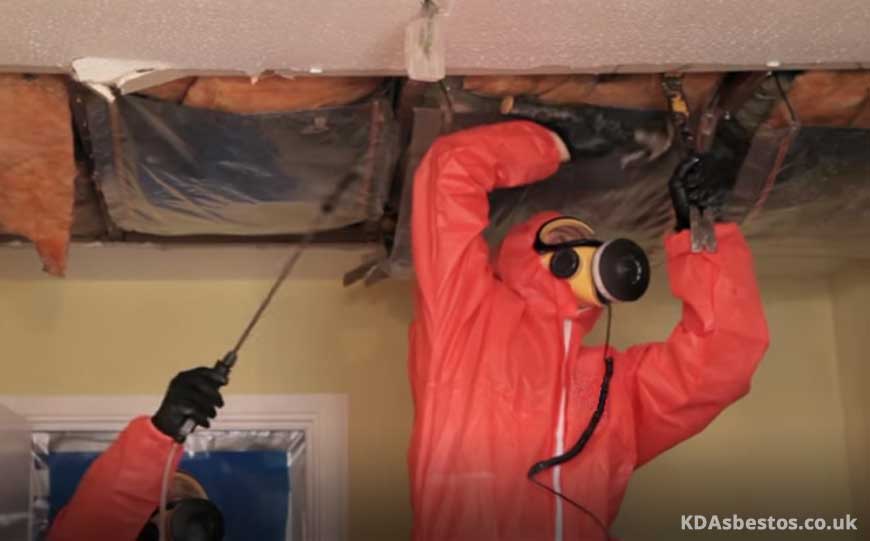
As noted earlier, you would need to carry out an asbestos survey and test various samples in order to know for sure whether asbestos is present or not.
As a general rule of thumb, if your ceiling or walls were finished with Artex in the 2000’s or later, you should not worry as the ban in the UK came into effect in in 1999.
However if it dates up to 1984 or before, then you should carry out a test.
Any Artex applied between 1984 and 1999 could also have a good probability of containing asbestos, as during that period there wasn’t a complete ban, but only a prohibition.
Even if most manufacturers of Artex ceased to include asbestos in their products, there were still some which might have, as well as the issue of importation from other countries, and any stocks that were still present.
How to Test Artex for Asbestos Presence?
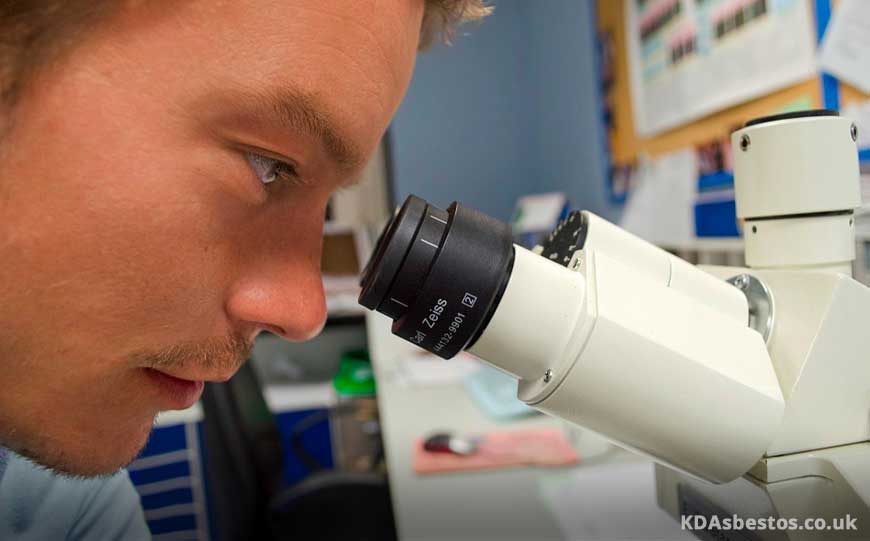
The decorative coatings will need to be sampled and taken to a lab for testing.
Samples will need to be obtained by a professional as in the case of decorative coatings, it is a bit trickier to be completely sure whether asbestos is present or not.
This is because these textured decorative finishes are non-homogenous.
They used to come on site in a powdered form and then mixed before being applied.
Hence the content of asbestos depended on the mixture.
Some areas may contain asbestos, while others may not.
As a result, several samples will need to be taken from different parts of the ceiling.
This is because the lab may not manage to pick up the presence of fibres, due to the sample having a very minimal frequency of the asbestos present.
Experienced asbestos surveyors will also appreciate the importance of carefully sampling Artex, because of the micron sizes of the fibres, which need highly sensitive equipment to be detected.
The samples will then be taken to a laboratory to be tested and results will be issued thereafter, which will confirm whether asbestos is present in your ceiling or not.
When Did the UK Ban Asbestos in Artex?
Artex was commonly made with asbestos to make it stronger.
It was also great as a fire retardant and an insulator.
Back then it was also much cheaper than wood, making it even more popular.
Asbestos-free Artex was made available back in the 1970s, but one can really not be completely sure whether asbestos is present until a test is carried out on a sample.
And it could also be possible that Artex containing asbestos might have been applied to walls and ceilings a number of years after it was produced.
Artex containing asbestos ceased to be produced in the UK in 1984.
However it took several years, as late as 1992 for it to be prohibited by the EU and UK legislation.
Some usage is still known to have continued back then, especially since there were still stocks present.
However, asbestos was banned in the UK in 1999.
So Artex coatings applied thereafter should not contain asbestos, although only a test can verify that.
Does Modern Artex Contain Asbestos?
Most manufacturers ceased to use asbestos in their products back in 1984.
All asbestos use was banned in 1999, although imported products might have contained asbestos, or used from stocks manufactured prior to the ban.
Having said that, it is safe to assume that such coatings manufactured thereafter are safe, as even those that contained asbestos were low risk since the asbestos content was very low.
It is important to avoid removal procedures or activities that might release fibres into the air however.
This includes sanding and drilling.
As a general rule of thumb, ‘modern’ Artex produced and installed after 1999 is safe to work with.
How to Remove Asbestos Ceilings
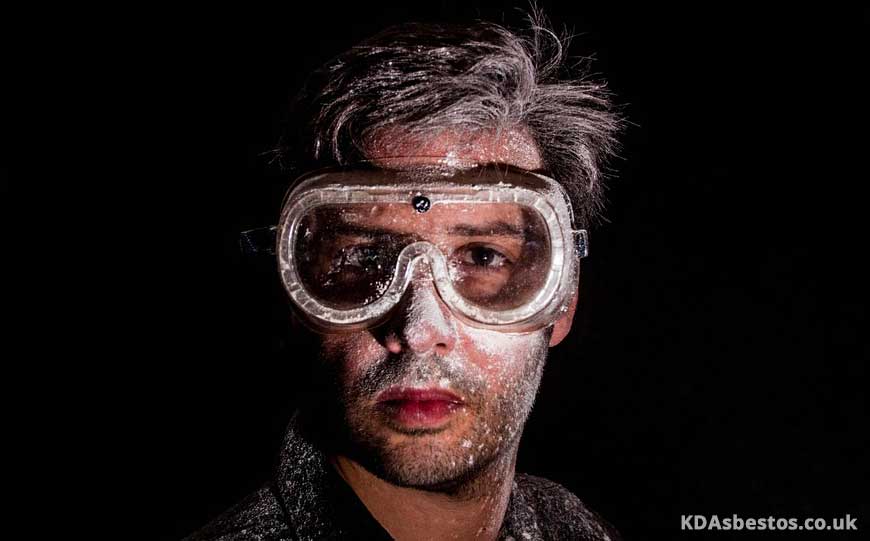
If the ceilings or walls contain asbestos, it’s best to leave their removal or handling in the hands of a professional asbestos removal company.
While the Artex is in good condition, there is nothing to worry about.
But in case it is disturbed, then it is hazardous.
Any activities or works such as sanding, drilling, scraping, grinding or chipping the material could easily lead to asbestos to become airborne, and hence easily inhaled.
In cases where you’re considering changing the appearance of the ceilings or walls, and the Artex is in good condition, you may wish to consider plastering over it instead.
This could help to make it safer as the new layer of plaster will basically be sealing and hiding it underneath it.
Having said that, if you opt to do this, you need to bear in mind that there will still be asbestos containing Artex underneath.
So in case you decide to undertake other work that requires drilling, demolition or removal in the future, you need to make sure that it is tackled safely.
If the work you’re planning involves refurbishment, extensive work or removal, you should have a professional handle it.
An expert in asbestos removal will be able to manage and dispose of the material safely, while using the proper equipment, and with professionals who are wearing the correct safety gear.
Conclusion
Artex should never be scraped, sanded or drilled into.
While the year when it was manufactured and applied matters a great deal on whether it contains asbestos or not, it is still important to be careful.
And as always, it is advised to seek professional advice and guidance on asbestos testing, removal and disposal is critically important too.